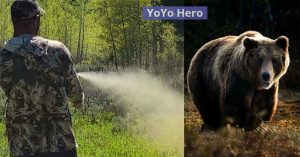The Basics: Understanding Bear Spray’s Lifespan. Does Bear Spray Expire? How Long Does Pepper Spray Last?
Bear spray, a formidable ally to outdoor enthusiasts, hikers, and campers alike, is a potent defense against potential bear encounters. Its popularity isn’t merely due to its protective capability but also its non-lethal nature, making it an ethically sound choice. Understanding bear spray’s core components and lifespan is paramount for ensuring its effective deployment.
The essence of bear spray lies in its chemical composition. The primary ingredient, capsaicin, extracted from hot peppers, is responsible for its pungent smell and burning sensation. This component, coupled with certain aerosol propellants, disperses the spray in a fine mist, reaching the bear’s eyes and nose. The resultant discomfort, though temporary, is enough to deter a charging bear, making it pivot and retreat.
Contents
However, like all products, bear spray isn’t eternal. Its effectiveness can diminish, potentially compromising defense in a critical situation. Various factors determine its lifespan, including the chemical components, storage conditions, and brand-specific formulations. For users, familiarizing themselves with the typical lifespan of famous brands is essential.
| Brand | Lifespan |
|---|---|
| Counter Assault | 3 years |
| UDAP | 4 years |
| PepperBall | 3-4 years |
| Sabre, Frontiersman | 3 years |
| Guard Alaska Mace | Check website |
To ensure that bear spray performs optimally when needed, users must heed its expiration date and store it in favorable conditions. Brands like Counter Assault, UDAP, and PepperBall have established reputations for their effectiveness and reliability. However, regardless of brand reputation, regularly checking the bear spray’s condition and staying updated on its expiration date is a proactive approach to safety.
 It’s worth noting that while certain brands might have a more extended shelf life than others, the storage and handling practices play a pivotal role in maintaining the spray’s efficacy. Improper storage can hasten the degradation of the active ingredients, leading to a reduced protective capability. Hence, it’s advisable always to keep the bear spray in a cool, nice dry place, away from direct sunlight and extreme temperatures.
It’s worth noting that while certain brands might have a more extended shelf life than others, the storage and handling practices play a pivotal role in maintaining the spray’s efficacy. Improper storage can hasten the degradation of the active ingredients, leading to a reduced protective capability. Hence, it’s advisable always to keep the bear spray in a cool, nice dry place, away from direct sunlight and extreme temperatures.
The Science Behind Expiry: Why and When Does Bear Spray Lose Potency?
Bear Spray’s credibility is more than just folklore. At its core, the spray harnesses potent chemical constituents that deter even the most audacious bears. However, like a fine wine that might turn to vinegar, bear sprays, too, despite their robust formulation, have a shelf life. As users, understanding the science behind its expiry can be enlightening and ensures maximum preparedness during wilderness outings.
At the heart of bear spray’s potency lies its primary ingredient: capsaicin. Derived from hot peppers, capsaicin is responsible for the immediate burning sensation experienced by the bear. Yet, like all organic compounds, capsaicin undergoes degradation over time. The rate at which this degradation occurs is influenced by numerous factors, such as temperature, exposure to light, and the quality of the canister’s seal.
| Component | Role in Deterioration |
|---|---|
| Capsaicin | Organic degradation reduces potency |
| Propellants | Loss of pressure can impact spray range |
| Canister Seal | Compromised seals can lead to evaporation |
| Environmental Factors | Heat and light accelerate chemical breakdown |
An equally significant aspect of bear sprays is the propellants. These agents are responsible for dispersing the spray, ensuring it reaches its target. Over time, propellants can lose their efficacy, primarily if the canister is compromised. This loss can render the bear spray ineffectual, as its range and dispersal pattern get hindered.
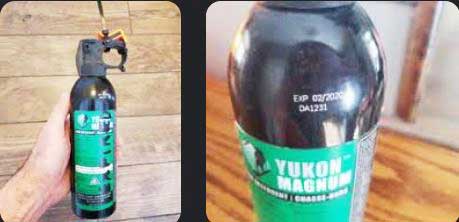 Imagine being in a scenario where a curious bear ambles closer, and you reach for the bear spray. Confidence turns to dread when the spray dribbles out or doesn’t cover the intended distance. This potential mishap isn’t due to manufacturing faults but can arise from improper storage or an expired canister. It illustrates the importance of understanding and respecting bear spray’s shelf life.
Imagine being in a scenario where a curious bear ambles closer, and you reach for the bear spray. Confidence turns to dread when the spray dribbles out or doesn’t cover the intended distance. This potential mishap isn’t due to manufacturing faults but can arise from improper storage or an expired canister. It illustrates the importance of understanding and respecting bear spray’s shelf life.
Moreover, the environment in which bear sprays are stored plays a pivotal role in their longevity. While these sprays are engineered for rugged use, extended exposure to extreme temperatures—be it the sweltering heat inside a car in summer or the freezing confines of a winter backpack—can accelerate the degradation of its active components.
In real-world scenarios, bear spray stored in the glove compartment of a vehicle during a heatwave might degrade faster than one kept in a cool, dry place. Additionally, if exposed to direct sunlight, the UV rays can further compromise the canister’s contents, leading to faster degradation of capsaicin and other compounds.
Effectiveness Metrics: Does Bear Spray Always Work?
 In a world inundated with gadgets promising safety and efficiency, bear spray is an iconic wilderness tool, acting as a formidable shield between humans and bears. Yet, while its efficacy is commendable, it’s worth peeling back the layers to decipher its track record in real-life confrontations.
In a world inundated with gadgets promising safety and efficiency, bear spray is an iconic wilderness tool, acting as a formidable shield between humans and bears. Yet, while its efficacy is commendable, it’s worth peeling back the layers to decipher its track record in real-life confrontations.
Exploring studies and statistics: When has bear spray succeeded?
Our comprehensive review of various studies on bear encounters shows that bear spray has played a pivotal role in de-escalating potentially harmful situations. For instance, a survey conducted by the Interagency Grizzly Bear Committee observed that in 92% of cases involving grizzlies, bear spray successfully deterred the animal, ensuring human safety.
| Bear Species | Success Rate of Bear Spray |
|---|---|
| Grizzly Bear | 92% |
| Black Bear | 86% |
| Polar Bear | Data insufficient |
The potential risks: Situations when bear spray failed and why.
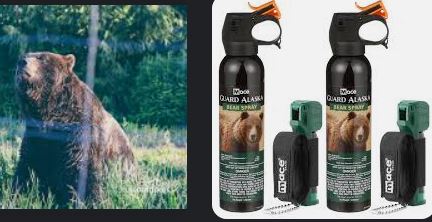 While the statistics sound reassuring, it’s prudent to note that no tool is infallible. In certain situations, bear sprays failed to deter bears. Several factors can account for this. A bear that’s extraordinarily aggressive or protective, wind conditions that divert the spray, or a spray that’s past its prime can all lead to less-than-optimal outcomes.
While the statistics sound reassuring, it’s prudent to note that no tool is infallible. In certain situations, bear sprays failed to deter bears. Several factors can account for this. A bear that’s extraordinarily aggressive or protective, wind conditions that divert the spray, or a spray that’s past its prime can all lead to less-than-optimal outcomes.
It’s essential to remember that while the bear spray is an effective deterrent, it is not a magic bullet. In conditions with high wind speed or unfavorable direction, the spray might not reach its intended target. Additionally, an agitated or habituated bear might respond differently than expected to the spray, underscoring the importance of understanding bear behavior and being prepared with other deterrent techniques.
One-time use concept: Why you might need a new can after deploying.
Once deployed, even if only briefly, the bear spray canister’s integrity might be compromised. The propellant, which ensures the spray’s adequate range, might deplete, making subsequent uses less effective. Furthermore, the canister seal could weaken, risking the loss of the spray’s potency over time.
| Component | Post-Deployment Effect |
|---|---|
| Propellant | Reduced dispersal range |
| Canister Seal | Potential for leakage |
After Expiry: The diminishing chances of effectiveness post-expiry.
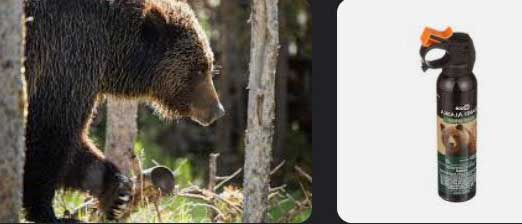 In previous sections, we’ve delved deep into the implications of bear spray expiry. However, a past-expiry bear spray can be likened to driving on a punctured tire – possible but risky. The chemical potency of the capsaicin diminishes, the fuel’s efficiency drops, and the overall reliability takes a nosedive.
In previous sections, we’ve delved deep into the implications of bear spray expiry. However, a past-expiry bear spray can be likened to driving on a punctured tire – possible but risky. The chemical potency of the capsaicin diminishes, the fuel’s efficiency drops, and the overall reliability takes a nosedive.
A notable incident involved a hiker relying on an expired canister during a bear encounter. The spray’s diminished range and potency resulted in an inadequate deterrent effect, reinforcing the critical nature of ensuring one’s bear spray is within its effective lifespan.
To put it briefly, while bear spray stands as a beacon of hope during precarious bear encounters, understanding its nuances, strengths, and limitations is paramount. This knowledge ensures optimal deployment and underscores the importance of respecting nature and being adequately prepared for unexpected wilderness curveballs.
Recognizing Aged Bear Spray: Indicators of Expiry
Navigating the great outdoors often involves mixing wit, instinct, and preparedness. Bare spray stands tall among the many tools of the trade, promising a safety shield against unpredictable wildlife encounters. But like all things, bear spray has its limitations. Recognizing an aged bear spray is paramount, ensuring both efficacy and safety. So, how does one discern the signs?
Reading and interpreting expiration dates.
Manufacturers ensure that the canisters come with an expiration date prominently displayed. But understanding this date is just as vital as its presence. It’s not merely a suggestion; it’s a cautionary marker indicating when the active ingredients might lose their potency.
| Label Element | Explanation |
|---|---|
| Manufacturing Date | The date when the bear spray was produced. |
| Expiration Date | A projected timeline post on which the spray might lose its optimal effectiveness. |
Physical examinations: Leaks, rusts, or other damages.
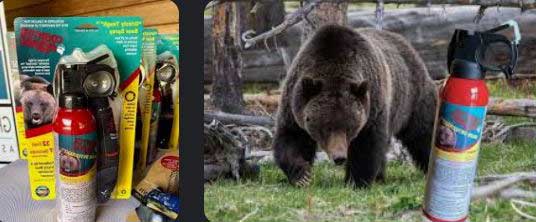 Much like how one would inspect perishable goods, a physical examination of the bear spray canister can reveal a lot. Check for any signs of leaks, rusting, or external damages. These might indicate the age and compromise the spray’s pressure, affecting its dispersal range.
Much like how one would inspect perishable goods, a physical examination of the bear spray canister can reveal a lot. Check for any signs of leaks, rusting, or external damages. These might indicate the age and compromise the spray’s pressure, affecting its dispersal range.
| Physical Indicators | Potential Implication |
|---|---|
| Leaks | Compromised seal or potential damage, risking reduced spray potency. |
| Rust | Extended exposure to moisture, potentially affecting internal components. |
The scent test: What fresh vs. expired bear spray smells like.
Taking a cautious whiff can often help in gauging the age. Fresh bear spray has a pungent, peppery odor thanks to its active ingredient, capsaicin. If the scent feels weak, diluted, or markedly different, it might indicate that the spray is past its prime.
| Scent Characteristic | Implication |
|---|---|
| Pungent, peppery | Fresh and likely within the optimal usage window. |
| Weak or diluted | Potentially expired or losing its potency. |
Reiterating the importance of shelf life for safety.
While we’ve delved deep into various aspects of bear spray aging, it’s vital to reevaluate the crux – safety. The shelf life isn’t just about ensuring the effectiveness of a product; it’s about guaranteeing safety. Using an expired or compromised bear spray in a crucial moment might lead to a false sense of security, which in the wilderness, can have dire consequences.
Ensuring that bear spray is within its effective window isn’t just a matter of procedure; it’s a testament to preparedness, responsibility, and respect for the unpredictable nature of the wild. Proper equipment, including up-to-date bear spray, paves the path for memorable adventures and stories celebrating the spirit in all its untamed glory.
Impact and Aftermath: Bear Spray on Humans and the Environment
Wandering through the uncharted terrains and the call of the wild, explorers and hikers equip themselves with essential tools. Bear spray, while primarily designed to deter aggressive bears, has raised questions regarding its impact on humans and the environment. We aim to address these concerns and provide insights into the aftermath of using this potent deterrent.
The immediate effects on humans post-spray.
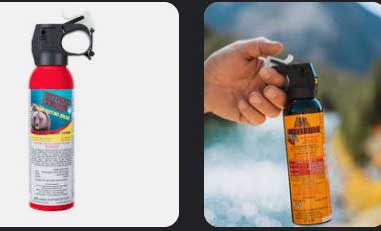 Accidental exposure or an unintended discharge of bear spray can immediately affect humans. The critical component, capsaicin, is responsible for the burning sensation when in contact with skin or eyes.
Accidental exposure or an unintended discharge of bear spray can immediately affect humans. The critical component, capsaicin, is responsible for the burning sensation when in contact with skin or eyes.
| Immediate Effect | Description |
|---|---|
| Eyes | Intense burning sensation, tearing, and temporary blindness. |
| Respiratory System | Coughing, difficulty in breathing, and a feeling of choking. |
| Skin | Burning sensation, redness, and possible swelling. |
| Mucous Membranes | Runny nose, salivation, and potential swelling of exposed areas. |
Duration of these effects and first aid measures.
While the immediate effects can be distressing, they are often temporary. Nevertheless, understanding the duration and having first aid knowledge can help mitigate the discomfort.
| Effect Duration | First Aid Measures |
|---|---|
| 15 – 45 minutes | Rinse eyes continuously with cold water. Avoid rubbing them. |
| Up to an hour | Stay in a well-ventilated area and try to breathe normally. Sip water to alleviate burning in the throat. |
| 30 minutes – 2 hours | Wash exposed skin with cold water and soap. Refrain from using warm water as it may intensify the burning. |
Environmental implications: What happens if bear spray residue is left in nature?
 Beyond personal discomfort, there is a broader consideration regarding the impact of bear spray on the environment. The residues, when left unchecked, might interact with natural elements.
Beyond personal discomfort, there is a broader consideration regarding the impact of bear spray on the environment. The residues, when left unchecked, might interact with natural elements.
| Environmental Aspect | Impact of Bear Spray Residue |
|---|---|
| Water Bodies | May lead to temporary contamination, affecting aquatic life. |
| Soil | Potential alteration in pH, impacting microorganisms and plants. |
| Wildlife | Animals may ingest or come into contact with the residue, leading to discomfort and altered behavior. |
The balance between human safety and environmental responsibility is delicate. While bear spray offers an effective non-lethal method of protection against potential wildlife threats, understanding its broader implications ensures that our adventures tread lightly on the nature we dearly cherish.
Safe Storage Practices
Embarking on wild adventures often necessitates preparation. Equally crucial is understanding how to securely store our protective tools, ensuring they are as effective as they were on day one. Bear spray, being a formidable yet sensitive tool, requires careful attention to storage.
When it comes to prolonging the lifespan of bear spray, temperature plays a pivotal role. The spray’s efficacy remains intact by maintaining an optimal temperature range.
| Storage Condition | Optimal Temperature Range (°F) |
|---|---|
| Room Storage | 60-75°F |
| Outdoor/Travel Storage | 50-85°F |
Freezing temperatures can significantly impair the performance of bear spray. The propellant inside may lose its pressure, rendering the spray less effective when needed.
 On the flip side, excessive heat is another foe of bear spray. Exposure to high temperatures can cause the canister to rupture, leading to unintentional discharge. It is especially concerning in confined spaces like cars, where temperatures can soar rapidly.
On the flip side, excessive heat is another foe of bear spray. Exposure to high temperatures can cause the canister to rupture, leading to unintentional discharge. It is especially concerning in confined spaces like cars, where temperatures can soar rapidly.
For those who prioritize safety, a few essential steps can make all the difference:
| Storage Tips | Description |
|---|---|
| Child Safety | Always keep bear spray out of reach of children. |
| Nozzle Check | Regularly inspect the nozzle for blockages or damages to ensure smooth discharge. |
| Vertical Storage | Store the canister vertically with the nozzle facing upwards. |
Safe Disposal and Replacement
Protection in the wild is paramount, and bear spray is essential to that equation. However, what becomes equally crucial is knowing when to let go of an old canister and how to dispose of it responsibly.
The environment has gifted us its wonders; in return, we must protect it. Responsibly disposing of bear spray is a step in that direction:
| Disposal Method | Procedure |
|---|---|
| Recycling Centers | Locate local recycling centers that accept aerosol canisters. |
| Hazardous Waste Facilities | Some facilities are equipped to handle bear spray disposal. |
Bear sprays come with an expiration date for a reason. Over time, the potency and reliability of the spray diminish. It is, therefore, vital to replace them periodically to ensure maximum protection.
 Quality matters, especially when it’s a matter of safety:
Quality matters, especially when it’s a matter of safety:
| Recommendations | Advantages |
|---|---|
| Authorized Retailers | Guaranteed authenticity and fresh stocks. |
| Reputable Brands | Highly effective, tested, and reliable products. |
Conclusion: Ensuring Safety with Bear Spray in the Wild
In the heart of the wild, where every moment can be thrilling and unpredictable, bear spray stands as a beacon of safety. Recognizing its importance goes beyond just owning a canister. It’s about understanding its nuances, from storage to disposal. It reminds us to be prepared and understand the balance between cost-saving and ensuring safety. Let’s champion the cause of responsible and informed adventures, always keeping safety at the forefront. Always be prepared, and always be safe.

Marta Savova is a journalist, health, technolgy and science writer. With over 20 years of experience in the field, she has published numerous research papers and articles and has a passion for sharing his knowledge with others. He is a regular contributor to several media.
